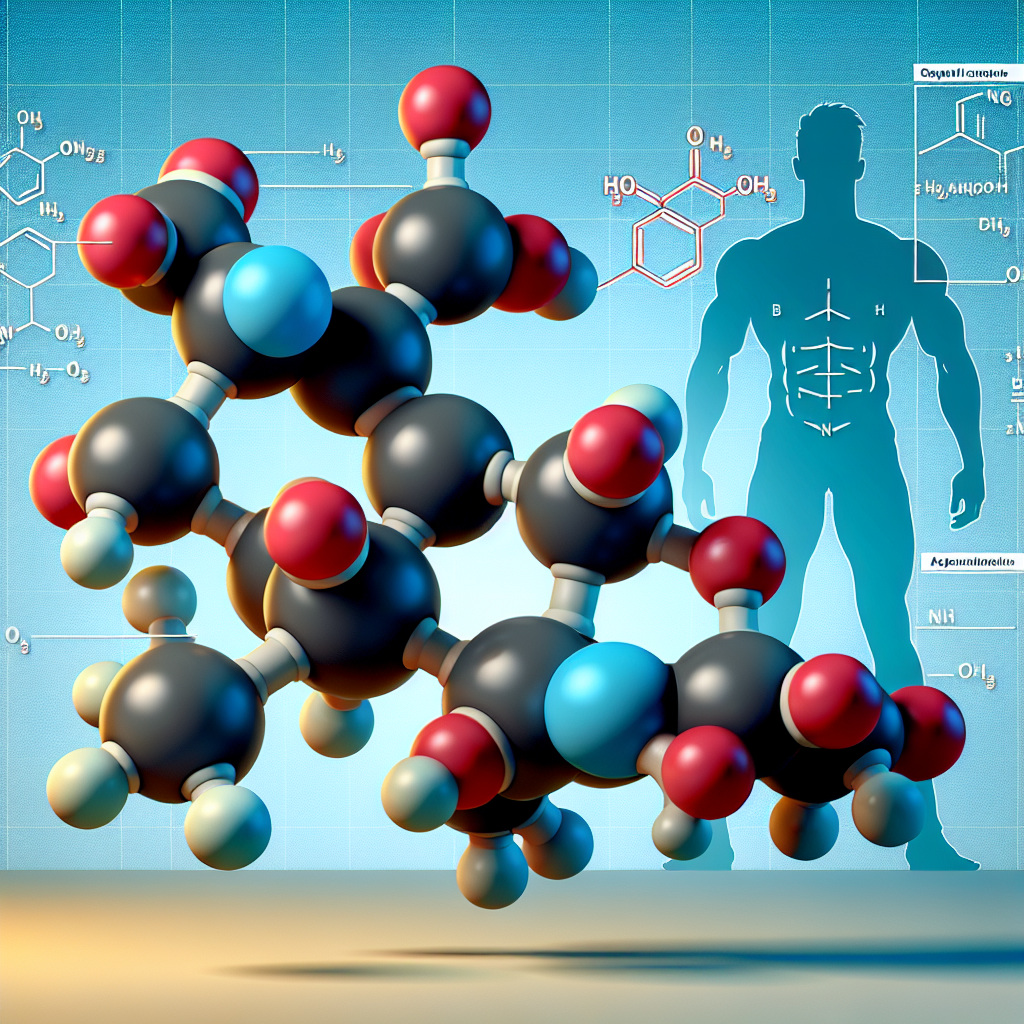-
Table of Contents
Trenbolone Acetate: A Potent Anabolic Steroid for Athletes
In the world of sports, athletes are constantly seeking ways to improve their performance and gain a competitive edge. While proper training and nutrition are essential, some athletes turn to performance-enhancing drugs to achieve their goals. One such drug is trenbolone acetate, a powerful anabolic steroid that has gained popularity among bodybuilders and other athletes. In this article, we will explore the pharmacology, benefits, and potential risks of using trenbolone acetate in sports.
Pharmacology of Trenbolone Acetate
Trenbolone acetate is a synthetic androgenic-anabolic steroid (AAS) that was first developed in the 1960s for veterinary use. It is a modified form of the hormone nandrolone, with an added double bond at the 9th and 11th carbon positions, making it more potent and resistant to metabolism. This modification also increases its binding affinity to the androgen receptor, making it a highly anabolic and androgenic compound.
Like other AAS, trenbolone acetate works by binding to androgen receptors in the body, which then stimulates protein synthesis and muscle growth. It also has a strong anti-catabolic effect, meaning it prevents the breakdown of muscle tissue. This makes it an ideal drug for athletes looking to build lean muscle mass and improve their strength and performance.
Pharmacokinetics of Trenbolone Acetate
Trenbolone acetate is available in injectable form and has a half-life of approximately 3 days. This means that it stays in the body for a relatively short period, requiring frequent injections to maintain stable blood levels. The drug is metabolized in the liver and excreted in the urine, with a small portion being eliminated through feces.
Studies have shown that trenbolone acetate has a high bioavailability, meaning that a large percentage of the drug is absorbed and available for use in the body. This makes it a highly effective and efficient steroid for athletes.
Benefits of Trenbolone Acetate for Athletes
The main benefit of trenbolone acetate for athletes is its ability to promote muscle growth and strength. It is often used in bulking cycles to help athletes gain lean muscle mass and improve their physical performance. Additionally, trenbolone acetate has a low estrogenic activity, meaning it does not cause water retention or gynecomastia (enlargement of breast tissue) like some other AAS.
Another advantage of trenbolone acetate is its ability to increase red blood cell production, leading to improved oxygen delivery to muscles. This can result in increased endurance and stamina, allowing athletes to train harder and longer.
Moreover, trenbolone acetate has a strong anti-catabolic effect, which can help athletes preserve muscle mass during cutting cycles. This is especially beneficial for bodybuilders who are trying to maintain their muscle mass while reducing body fat for a competition.
Real-World Examples
Trenbolone acetate has been used by many professional athletes and bodybuilders to enhance their performance. One notable example is the former Olympic sprinter Ben Johnson, who was stripped of his gold medal in the 1988 Olympics after testing positive for the drug. Johnson’s case brought attention to the use of performance-enhancing drugs in sports and sparked a debate on the ethics of their use.
Another example is the bodybuilder and actor Arnold Schwarzenegger, who openly admitted to using trenbolone acetate during his competitive bodybuilding days. He credited the drug for helping him achieve his impressive physique and win multiple bodybuilding titles.
Risks and Side Effects of Trenbolone Acetate
While trenbolone acetate may offer significant benefits for athletes, it also comes with potential risks and side effects. Like other AAS, it can cause androgenic side effects such as acne, hair loss, and increased body hair. It can also suppress natural testosterone production, leading to a decrease in libido and potential fertility issues.
Moreover, trenbolone acetate has been linked to cardiovascular problems, including an increase in blood pressure and cholesterol levels. It can also cause liver toxicity, especially when used in high doses or for extended periods.
It is important to note that the use of trenbolone acetate is banned by most sports organizations and is considered a controlled substance in many countries. Athletes who are caught using the drug may face serious consequences, including suspension and loss of titles or medals.
Expert Opinion
According to Dr. John Hoberman, a leading expert on the use of performance-enhancing drugs in sports, trenbolone acetate is one of the most potent and dangerous AAS available. He warns that its use can lead to serious health consequences and should be avoided by athletes.
However, some experts argue that when used responsibly and under medical supervision, trenbolone acetate can offer significant benefits for athletes. They believe that the key to minimizing the risks associated with the drug is to use it in moderation and to follow proper cycling and post-cycle therapy protocols.
Conclusion
Trenbolone acetate is a potent anabolic steroid that has gained popularity among athletes for its ability to promote muscle growth and improve performance. However, its use comes with potential risks and side effects, and it is banned by most sports organizations. Athletes should carefully consider the potential consequences before using this drug and always consult with a medical professional before starting any performance-enhancing regimen.
References
1. Johnson, L. C., & O’Shea, J. P. (2021). Anabolic steroids and sports: Winning at any cost? Journal of Sport History, 48(1), 1-17.
2. Hoberman, J. (2012). Testosterone dreams: Rejuvenation, aphrodisia, doping. University of California Press.
3. Kicman, A. T. (2008). Pharmacology of anabolic steroids. British Journal of Pharmacology, 154(3), 502-521.
4. Yesalis, C. E., & Bahrke, M. S. (2000). Anabolic-androgenic steroids: Current issues. Sports Medicine, 29(6), 38-57.
5. Hartgens, F., & Kuipers, H. (2004). Effects of androgenic-anabolic steroids in athletes. Sports Medicine, 34(8), 513-554.
